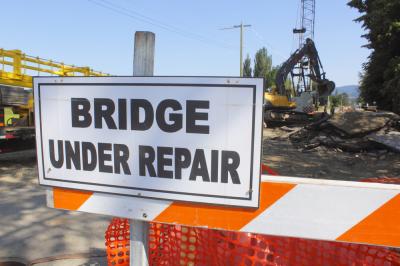The first phase of public improvements for a $1.2 billion mixed-use development project recently began in Baltimore, Md.
Westport Waterfront involves 50 acres (20.2 ha) along the Middle Branch of the Patapsco River. American Recovery and Reinvestment Act of 2009 (ARRA) funding totaling $620,500 will be a portion of the money used to reconstruct the shoreline and create the waterfront tidal wetlands.
The construction manager for the shoreline reconstruction, wetland installation and infrastructure construction is the Whiting-Turner Contracting Company, based in Baltimore. The project is under the direction of Karl F. Mattoon Pletl and was awarded by the Maryland Department of the Environment.
Work began in December 2009. Shoreline reconstruction is set for completion in May 2010, and the overall project is expected to take eight to 10 years to complete.
Westport Waterfront is a 50-acre transit-oriented development located along the Patapsco River, which is a body of water five times the size of Baltimore’s Inner Harbor.
“With two million square feet of office space, 2,000 residential units, 300,000 square feet of retail and 500 hotel rooms, Westport’s master plan creates a dynamic, transit-oriented community on the forefront of sustainable ’green’ design,” said Deb Kleiner of Cleo Communications, a spokesperson of Whiting-Turner.
Extensive active and passive open spaces will include multi-use pedestrian bike trails, urban plazas, a waterfront esplanade, and two piers for kayak and Olympic-style crew launches.
Construction has begun on the first phase of public improvements, which includes construction of a living shoreline wetland along approximately 900 linear ft. (274 m) of the Patapsco River. The intertidal wetland project will include the installation of an environmental cap and wetland sill as well as a floating boom to minimize floating debris in the wetland.
Kleiner reported that Westport faced two kinds of pre-existing environmental challenges.
“The first challenge was to identify and remove regulated materials, such as asbestos and oil-filled containers from within the buildings located at the property,” she said. “The second challenge was to test soil and groundwater at the site to make sure that any residual impacts from the prior industrial operations were fully evaluated and remediated. To date, all regulated materials have been removed from within the former buildings. Further, the former buildings have been demolished so that only the foundations remain.”
Kleiner noted that there also was an inherent challenge between the developer’s desire to create a soft “green” edge at the waterfront and the paved and sealed bulkhead treatment typically required with the redevelopment of a former industrial site.
“Westport Waterfront’s master plan overcame this challenge by incorporating a combination of riprap installations with dry swales that will cap hazardous materials while allowing for a more natural filtration system of runoff at the water’s edge,” she said. “Additionally, Westport needed additional permits to build in both a tidal and non-tidal flood plain.”
The project is currently the only neighborhood development on the East Coast seeking LEED for Neighborhood Development (LEED-ND) platinum designation.
“Westport Waterfront is the premiere local example of Smart Growth development,” Kleiner said. “It conserves financial resources by virtue of its location in an existing urban community where infrastructure exists and it restores and preserves a valuable natural habitat in the Chesapeake Bay watershed.”
The project will include 1,200 linear ft. (365 m) of shore line stabilization, 950 linear ft. (289 m) of wetland creation, and 4,500 tons (4,082 t) of class II riprap. To date 198 tons (179 t) of MD No. 2 stone have been received.
Eight acres (3.2 ha) of land have been designated as permanent forest and habitat conservation areas, and more than 70,000 trees, shrubs and plants will be planted. In addition, dryswales, bioretention, rain basins, green roofs, and recreated wetlands will mitigate storm water runoff into the Chesapeake Bay.
Major subcontractors include Dixie Contracting, which is the primary contractor on site doing all the heavy earth work; Kayden Primer Enterprises, which is responsible for all installation of sediment and erosion control; and Fallsway, which is responsible for hauling riprap and sand into the job site from the quarry.
All major construction equipment on the job is currently Caterpillar, and includes a 345 excavator, 250 and 350 end dump site trucks, 953 and 964 track loaders, a wide track D4 dozer and a D5 dozer.
According to Kleiner, the wetland reconstruction is part of Turner and Baltimore City’s strategy to restore the ecology of the Middle Branch, which is home to abundant populations of fish, birds and other wildlife but has suffered from degradation due to decades of industrial development.
“Restored wetlands improve water quality by filtering contaminants while also providing important habitat for juvenile fish that provide food for larger fish and birds,” she said. “Wetland restoration of the Middle Branch is key priority of Baltimore City as it focuses on the redevelopment of the Middle Branch watershed as Baltimore’s ’green harbor.’ Turner is planning additional wetland areas in Phase II of the project as part of the development’s overall green infrastructure.”
Construction of the first major building in Westport, which is a luxury apartment structure developed by Landex Companies, is expected to begin in 2011.
Today's top stories















